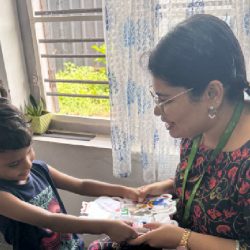Unravelling Myths About Palliative Care

Palliative care has long been shrouded in myths and misconceptions about what it is and what it can offer. A direct consequence is that people who could benefit from it do not see it as a necessity, believe it does not apply to their situation, or look at it as end-of-life care. Guided by these perceptions, they rarely seek it out or consider it part of a treatment plan for long-term and/ or life-threatening illnesses or disabilities. This must change.
The goal of palliative care is to improve patient’s quality of life, helping manage pain and provide support in various ways. Support extends not just to patients, but their caregivers as well. According to the WHO, only 14% of the people who need palliative worldwide receive it. A significant reason for this is accessibility but another major contributing factor – in places where palliative care services are accessible – is misinformation. Let’s see if we can change that by breaking down some of the myths about palliative care.
Also read: Decoding the Facts About Palliative Care
Palliative Care & Cancer
One of the most prominent myths about palliative care is that it is only meant for cancer patients. This is not true at all. The fact is, palliative care can benefit anyone dealing with an illness that compromises the quality of life. These include (but are not limited to) congestive heart failure (CHF), chronic obstructive pulmonary disease (COPD), kidney disease, Alzheimer’s, Parkinson’s, and Amyotrophic Lateral Sclerosis (ALS). Furthermore, it can be administered at the point of diagnosis or any point during the patient’s journey, alongside regular treatments – it need not be a choice after everything else has seemingly failed. Some studies have shown that patients who have received palliative care early on in their treatment have lived longer and have enjoyed a relatively better quality of life.
Also read: Palliative Care: Improving Quality of Life
Palliative Care & The Hospital
Another myth that haunts palliative care is that it can only be provided in a hospital. Once again, this is not true. The fact is that palliative care can be offered in a long-term care facility, a hospice facility, and, most importantly, at home. A hospital is but one option where these services can be provided. It is administered in accordance with a patient’s needs, not prognosis. The palliative care team proactively works with a patient’s team to work out a treatment plan keeping their best interests at the centre to enjoy the best quality of life possible as they manage their illness or condition. Furthermore, it is of value to note that palliative care goes beyond just relieving pain and helping patients cope with stress. It includes social, spiritual, practical, and financial support.
Also read: Beyond saving lives
It’s Time to Rethink Palliative Care
It’s easy to get blindsided by hearsay or half-truths and let perceptions cloud judgment. Palliative care is an excellent example of why getting our facts straight before making decisions is essential, especially concerning health and quality of life. It’s time we rethink what we know about palliative care and understand what it has to offer so that we can help those who need it receive the care they deserve.
Stay tuned for more myth-busters as we try to break down the misconceptions about palliative care and offer insight into its value.





